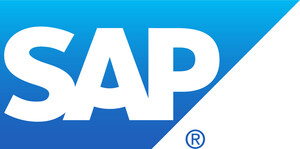WALLDORF, Germany, Aug. 9, 2016 /PRNewswire/ -- SAP NEWSBYTE — A recent report from SAP SE (NYSE: SAP) and Ovum titled "Technology Transformation in the Global Insurance Industry" states that, to remain competitive, insurance providers must take a proactive approach to helping customers manage risk through technology-enabled "insurance-as-a-service" solutions.
The insurance industry is entering a new stage, one characterized by new products, services, competitors and customer demand. As technology-driven change continues to accelerate, it will challenge existing business models and force carriers to offer a product-based proposition based on more than just price. Insurance providers need to become active participants in their customers' lives, playing the role of a comprehensive "risk manager" and providing services and solutions based on individual needs and preferences.
According to the report, the shift will happen in the next five to 10 years due to the increasing importance of three critical forces: digital transformation, cloud and the Internet of Things (IoT). These forces allow carriers to:
- Capture the tremendous volume of data generated by digital technologies to predict risk more accurately. Carriers can use this information to become a trusted advisor to their customers and alert them to potential problems in advance.
- Replace cumbersome IT delivery models with cloud architectures that are faster and far more flexible. Carriers will be able to respond quickly to customer demands and requests by introducing new features and functionalities in near real time.
- Incorporate IoT technology, for example, embedded sensors, telematics and home automation to offer individual policyholders the autonomy to create their own, highly customized policies based on the level of risk they present. As an example, premiums for auto insurance could vary – when the car is driven, premiums increase and, conversely, decrease when the car is parked.
"To fully exploit the opportunities presented by these technologies, carriers need to view them as core parts of their business strategy," added Charles Juniper, principal insurance analyst, financial services technology, Ovum Research. "Digital transformation, cloud and IoT all play an important role in creating a seamless experience that provides added value to customers. It's this added value that will make insurance carriers a more active, valuable participant in their customers' lives and help them to compete against new market entrants."
A broader look at the perspective at SAP on the digital transformation happening in insurance can be found at "How Insurers Can Prepare for the Digital Revolution."
For more information, visit the SAP News Center. Follow SAP on Twitter at @sapnews.
Media Contact:
Birgit Dolny, +49 (6227) 7-61664, [email protected], CET
Jill Fisk, FleishmanHillard, +1 (617) 692-0529, [email protected], EDT
Any statements contained in this document that are not historical facts are forward-looking statements as defined in the U.S. Private Securities Litigation Reform Act of 1995. Words such as "anticipate," "believe," "estimate," "expect," "forecast," "intend," "may," "plan," "project," "predict," "should" and "will" and similar expressions as they relate to SAP are intended to identify such forward-looking statements. SAP undertakes no obligation to publicly update or revise any forward-looking statements. All forward-looking statements are subject to various risks and uncertainties that could cause actual results to differ materially from expectations. The factors that could affect SAP's future financial results are discussed more fully in SAP's filings with the U.S. Securities and Exchange Commission ("SEC"), including SAP's most recent Annual Report on Form 20-F filed with the SEC. Readers are cautioned not to place undue reliance on these forward-looking statements, which speak only as of their dates.
Logo - http://photos.prnewswire.com/prnh/20110126/AQ34470LOGO
SOURCE SAP SE
Related Links
WANT YOUR COMPANY'S NEWS FEATURED ON PRNEWSWIRE.COM?
Newsrooms &
Influencers
Digital Media
Outlets
Journalists
Opted In




Share this article